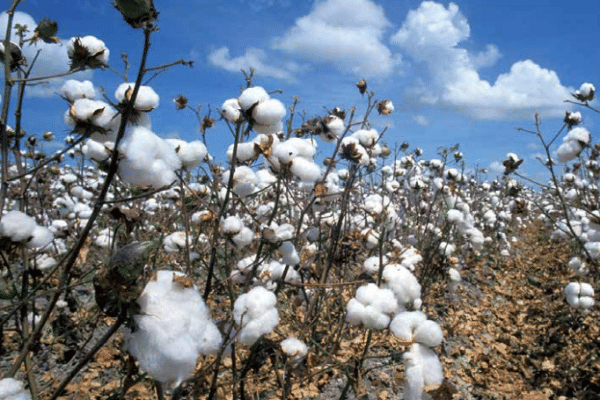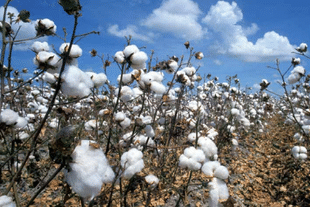Economy
How A Government Order Controlling Prices Has Led To A Thriving Illegal Cotton Seed Business
M R Subramani
Jul 12, 2018, 05:27 PM | Updated 05:27 PM IST
Save & read from anywhere!
Bookmark stories for easy access on any device or the Swarajya app.


A decision taken by the Union government in 2015 to come out with a Cotton Seeds Price (Control) Order is now posing problems as global seed firms such as Bayer and Pioneer are hesitating to provide technology to Indian seed firms. This is leading to risks on the farm front, with some seed firms manufacturing seeds whose technology has not been approved by the government. In addition, farmers are growing these without considering the repercussions.
Nothing could be more illustrative of the issue than this Mint report which says that a high-level expert panel set up by the Prime Minister’s Office found that nearly 15 per cent of the area under cotton cultivation had been planted with unapproved herbicide-tolerant seeds last season (July 2017-June 2018). The genesis of this problem lies with the 2015 order. A Press Information Bureau release quoted Union Agriculture Minister Radha Mohan Singh as saying that the order was issued to ensure uniformity in the price of Bt (Bacillus thuringiensis) or genetically modified cotton across the country.
There is nothing wrong in fixing a maximum retail price to a product. But is it fair on the part of the government to decide on what the royalty amount should be to the person who worked to come out with the product or the gene that led to production of these Bt cotton varieties?
The order allocates no money for the Bollgard I variety and Rs 49 for the Bollgard II variety. What has happened is that those who passed the order haven’t had a look at the role Bt cotton has played in helping improve the fibre’s yield in the country, meeting rising demand from the textile industry, thus saving precious foreign exchange outgo and also improving the living conditions of seven million farmers who are dependent on the cotton crop.
At one point of time in the late 1990s, India struggled to produce 17.5 million bales (of 170kg each) of cotton, with production in the northern belt of Punjab, Haryana, and Ganganagar tracts of Rajasthan plateauing as the strains lost their potency. Currently, India’s cotton production hovers around 37.5 million bales. The rapid rise in production came after Bt cotton was introduced in the country with the yields rising to 552kg per hectare now from 302kg in 2002. The Atal Behari Vajpayee government had to speed up introduction of Bt cotton in the country in 2002 since farmers in western states such as Gujarat began to grow Bt cotton from unlicensed seeds. The NITI Aayog leaves no one in doubt on the significant contribution of Bt cotton with these comments made in 2015:
….The success of Bt cotton in India and many more GM seeds elsewhere in the world testifies to the potential of GM technology in giving a major boost to productivity in agriculture. Nevertheless, GM seeds and technologies have remained controversial in India and other countries. Thirteen years have passed since the introduction of Bt cotton and no scientific evidence of detrimental effects on either Bt cotton users or other crops located in the vicinity of Bt cotton farmers has been produced. But India has not introduced any new GM seeds.NITI Aayog
There is nothing wrong with the government considering farmers’ welfare and fixing a maximum retail price. But the Agriculture Ministry, in particular, seems to have poked its nose on the trait or royalty or licence fees. It has stepped on a minefield by trying to adjudicate commercial agreements or bilateral pacts. This has resulted in seed companies taking advantage of the situation and arbitrarily reducing the license fees to make use of technology.
While coming out with the order, the Agriculture Ministry didn’t take into account the fact that the trait fee paid by the farmer was the lowest compared with other countries. A study made by IMRB in 2008 showed that Indian farmers paid Rs 312 per acre as trait fees compared with Rs 1,187 paid by United States (US) farmers, Rs 1,250 by Burakina Faso growers, and Rs 5,260 by Australians. For Indian growers, the fee made up 2.3 per cent of the total benefits they reaped compared with over 20 per cent in the US and Burakina Faso.
There has been no clear reason on what basis the trait fee has been decided – nil for Bollgard I and Rs 42 for Bollgard II from 2016 for a 450gm packet that includes a 120gm pack of non-Bt cotton seeds. (Non-Bt cotton seeds have to be given with Bt cotton to be grown as refuge or around the area where the transgenic strain is grown to ensure it doesn’t lose its immunity to pest attacks.)
The Rs 42 trait fee to be paid per packet wouldn’t even be able to meet the amount spent on research and development (R&D) to bring out the genetically modified cotton variety. How can any firm carry out R&D activity when returns don’t even allow you to break even, wonder those in seed research, asking which global firm will be ready to share or offer its technology for a pittance? This led to US seed research firm Monsanto, which introduced transgenic cotton with the Bt gene, withdrawing its application in August 2016 for commercial cultivation of herbicide-tolerant cotton. The herbicide-tolerant cotton variety is also a genetically modified one. The herbicide-tolerant variety is important for the crops to withstand herbicides that are sprayed to eliminate weeds on farm lands. When herbicide is sprayed to kill the weeds, it inadvertently affects the standing crop too. The herbicide-tolerant variety has been genetically modified to overcome this issue.
Before withdrawing its application for commercial cultivation of the herbicide-tolerant variety, Monsanto, along with its technology partner Mahyco, had introduced it for trial farming to get regulatory approval in 2013. Had the centre not come out with the price control order, it was very much on the cards that Monsanto would have pressed with its application. And for all you may know, we could have had the variety available from 2017.
The introduction of the herbicide-tolerant variety for trials has resulted in some of the seed companies illegally obtaining the technology. In turn, these firms have sold the unlicensed seeds in the market that farmers have bought and cultivated. This cultivation of illegal seeds has now been reflected in the findings of a high-level panel called the Field Inspection and Scientific Evaluation Committee, formed by the Prime Minister’s office (PMO). The committee has found unapproved cotton seeds being sown in Gujarat, Maharashtra, Andhra Pradesh, Telangana, and Punjab. This could mean that nearly 500,000 farmers and another five to six million employed with them run the risk of being affected if something goes wrong with the unapproved crop. This is a huge risk that is not affordable.
Since the PMO itself is involved in this development, it could review the cotton price control order in terms of the trait fees that the technology-giver gets. Such a move will ensure two things: One, it will clear the hurdle for companies to provide their technology to India. Two, it will encourage more R&D spending in the country.
The other thing that the government needs to do is crack down, without sympathy, on some of the companies, allegedly close to right-wing organisations, that have produced these unapproved seeds. The Narendra Modi government has time and again reiterated that it wants to double farmers’ incomes by 2022. For that, the farmer needs right technology and better seeds. Paying the right price for technology is the key to getting good quality seeds and improving yield. This, in turn, will ensure a better quality of life for the farmer.
M.R. Subramani is Executive Editor, Swarajya. He tweets @mrsubramani




